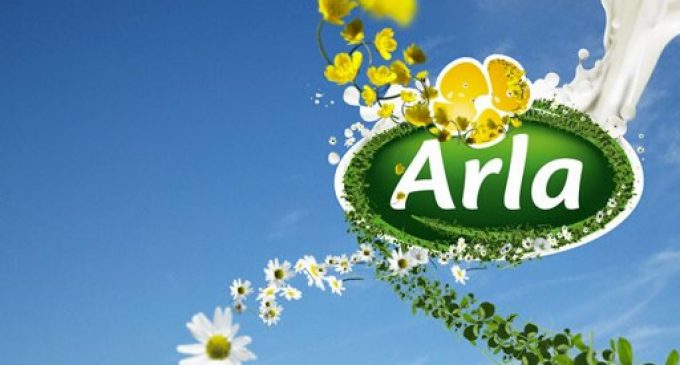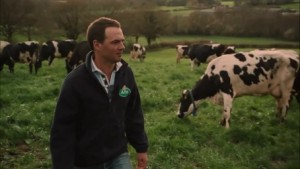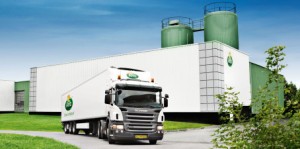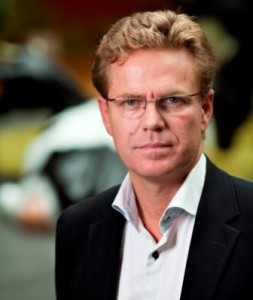Arla Foods Delivers a Robust Performance in Difficult Conditions

Arla Foods has reported a 3.3% decline in revenue to Eur10.3 billion with net profit down almost 8% to Eur295 million for 2015 as increased milk production in Europe coupled with a slowdown in demand in China and the ongoing Russian trade embargo caused world market prices to plummet. The 2015 outcome is fully in line with the dairy co-operative’s expectations.
Owned by 12,700 farmers from Denmark, Sweden, the UK, Germany, Belgium, Luxemburg and the Netherlands, Arla Foods is one of the strongest players in the international dairy arena, with a wide range of dairy products and well-known brands like Lurpak® and Castello®. Arla Foods is also the world’s largest manufacturer of organic dairy products.
“We knew 2015 would be tough on all markets, and it was. Dairy prices have been under pressure worldwide all year, and every dairy farmer has felt the consequences,” says Peder Tuborgh, chief executive of Arla Foods. “It affected Arla’s milk price to our owners and our revenue in 2015. Having said that, Arla has achieved what we set out to do within our business in a year when the entire dairy industry has struggled.”
 The performance price, which measures the value Arla has generated from each kilo of milk supplied by the farmer-owners, was 33.7 eurocent pr. kilo with a total volume of owner milk of 12.5 billion kilos in 2015 (compared to 41.7 eurocent pr. kilo with a total volume of owner milk of 11.7 billion kilos in 2014).
The performance price, which measures the value Arla has generated from each kilo of milk supplied by the farmer-owners, was 33.7 eurocent pr. kilo with a total volume of owner milk of 12.5 billion kilos in 2015 (compared to 41.7 eurocent pr. kilo with a total volume of owner milk of 11.7 billion kilos in 2014).
Arla Foods has responded to the adverse trading environment by moving even more of its milk into branded dairy products and foodservice, improving market positions and reducing costs. “We have worked intensely to minimise the damage from the negative global trends by reducing costs and by maintaining and improving our market positions in Europe while creating new market positions for our branded products outside the EU,” he explains.
In the past, Arla Foods’ profit target was 3% of company revenue, but in August 2015 it was reduced to between 2.7% to 3.0% in order to facilitate a prepaid milk price to support its farmer-owners in their difficult financial situation in the face of the global decline in milk prices.
 Arla Foods recently unveiled its new Strategy 2020 setting out to grow its business in eight global dairy categories and six market regions as the company moves to navigate a dramatically changing global dairy market.
Arla Foods recently unveiled its new Strategy 2020 setting out to grow its business in eight global dairy categories and six market regions as the company moves to navigate a dramatically changing global dairy market.
“We are working fiercely to expand our branded business in growth regions outside the EU but also within our European lead markets. We are launching new innovations and have increased the marketing spend to support this. We have gained market shares in most of our markets although the competition is fierce, with everyone competing for their share of the market while global prices are under pressure. We are confident that Arla has the right strategy to take the company and its owners forward as we focus on organic growth within our existing branded business,” says Peder Tuborgh.
Arla Foods is continuing to pursue its long-term efficiency programmes and achieved its annual savings goal of Eur330 million in 2015 compared to 2012 cost-levels. “Delivering consistently on both agendas – expanding our branded business while reducing costs – has significantly improved the strength of our business. Constantly becoming more cost-efficient is a crucial part of our efforts to create the best value for our farmer-owners in the extremely tough conditions. We have therefore set a new target of delivering additional annual savings of Eur400 million by 2020, starting with the first Eur100 million in 2016,” says Peder Tuborgh.
Looking ahead, Arla Foods anticipates its 2016 revenue to be on par with the 2015 level, and its profit to be within the range 2.8% to 3.2% of the company’s revenue.
“The global dairy industry has rarely been as tough and unpredictable, and 2015 has unfortunately been as challenging as we anticipated. We have an extremely difficult task ahead of us in 2016 as global milk supply still exceeds demand. We do expect that the global market will begin to turn for the better towards the end of 2016,” says Peder Tuborgh.


































